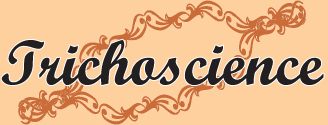"Science begins with measurement“,
Dmitry Mendeleev.
Currently Dermatoscopy firmly holds the position
of one of the most affordable and effective methods of diagnosis in Dermatology.
As a science Dermatoscopy received first impact to development in 1663, when
Johan Christophorus Kolhaus
investigated small vessels of the nail bed with a microscope. In 1920
I. Saphier introduced
the term of "Dermatoscopy" and produced detailed description of the
possible assessment methods of capillaries in the lower lip by means of Dermatoscope. In 1989 R. Soyer
revealed a correlation of Dermatoscopic criteria with
underlying histopathological structures. The first
conference on Dermatoscopy was held in 1989 in
Quite recently Dermatoscopy has advanced into
another Dermatology field – Trichology. In 1993 Kossard
and Zagarella published a case of scarring alopecia
in 42-year-old African-American woman and described its diagnostic Dermatoscopic criteria associated with perifollicular
fibrosis visualization. First videodermatoscopic
criteria of androgenetic alopecia severity and ways of dynamic monitoring of
the therapy efficacy were described In 2005. Since
2006 Rudnicka introduced the term "Trichoscopy"
which has been applied in assessing the condition of the hair, scalp, eyebrows,
eyelashes with videodermatoscopic
technology. The authors have shown that by means of Trichoscopy it is quite simple
to identify such conditions as Moniletrix and other
genetic hair diseases. The first Dermatoscopy atlas of hair and scalp was
released by A. Tosty in 2007. In 2008 Rudnicka and
other coauthors described the diagnostic Trichoscopic
criteria of Alopecia Areata with atypical course of progression, when it is difficult
to provide clinical evaluation based on clinical symptoms. In authors opinion the leading signs are "yellow spots", cadaverized hair ("black spots"), exclamation
mark hair (up to 1 mm length) and dystrophic hair. They also
described Vellus hair in focal alopecia sites. Perifollicular
fibrosis signs in form of “white spots” may
be observed in extended courses of this form of alopecia.
As for Alopecia Androgenetica – this condition is
easily diagnosed at first site in most cases due to its typical clinical
picture. But practice has shown that many professionals tend to
confuse a concept of chronic diffuse Telogen hair loss and androgenetic
alopecia in women. The most accurate methods of differential diagnosis of
these conditions besides Trichoscopy are phototrihograms.
Carrying out the technique of phototrichogram with
contrast and tattoo can rapidly increase the reliable assessment of the treatment
dynamics. This has been successfully applied in both the scientific and simply routine
activities of Trichologists. Specialists in the diagnosis and treatment of hair
diseases almost always need to have reliable information on hair density
(number of hairs per square cm) in different areas of the scalp, hair diameters,
ratio of terminal and thinning (Vellus-like) hair, percentage of growing and shedded hair, etc. To obtain reliable results of these
studies the most frequently used methods are Trichoscopy and phototrihogram.
. “Science begins with measurement"- these words belong to
famous Russian scientist Dmitry Mendeleev. The most active development of Trichology in




